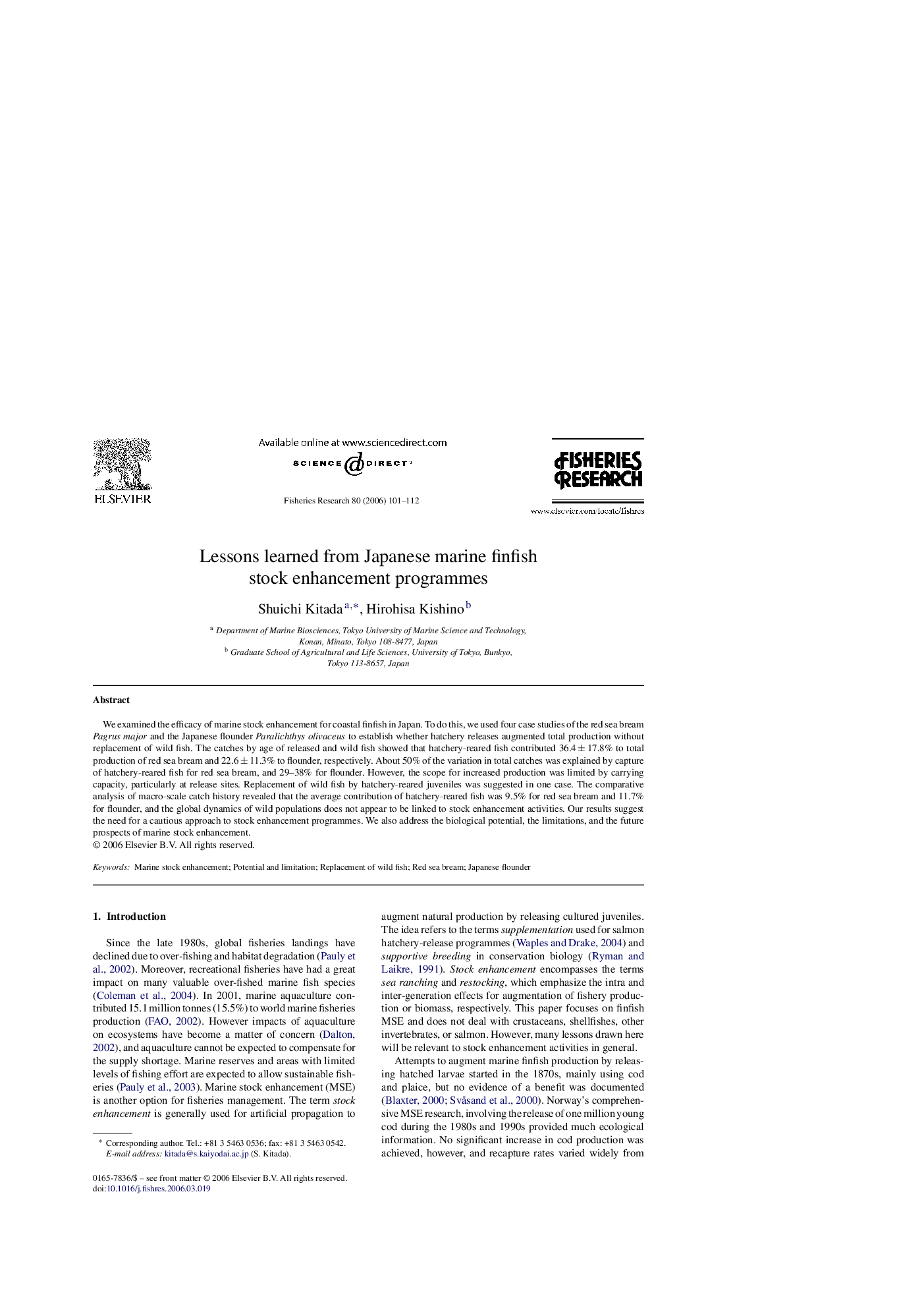| Article ID | Journal | Published Year | Pages | File Type |
|---|---|---|---|---|
| 4544958 | Fisheries Research | 2006 | 12 Pages |
We examined the efficacy of marine stock enhancement for coastal finfish in Japan. To do this, we used four case studies of the red sea bream Pagrus major and the Japanese flounder Paralichthys olivaceus to establish whether hatchery releases augmented total production without replacement of wild fish. The catches by age of released and wild fish showed that hatchery-reared fish contributed 36.4 ± 17.8% to total production of red sea bream and 22.6 ± 11.3% to flounder, respectively. About 50% of the variation in total catches was explained by capture of hatchery-reared fish for red sea bream, and 29–38% for flounder. However, the scope for increased production was limited by carrying capacity, particularly at release sites. Replacement of wild fish by hatchery-reared juveniles was suggested in one case. The comparative analysis of macro-scale catch history revealed that the average contribution of hatchery-reared fish was 9.5% for red sea bream and 11.7% for flounder, and the global dynamics of wild populations does not appear to be linked to stock enhancement activities. Our results suggest the need for a cautious approach to stock enhancement programmes. We also address the biological potential, the limitations, and the future prospects of marine stock enhancement.
